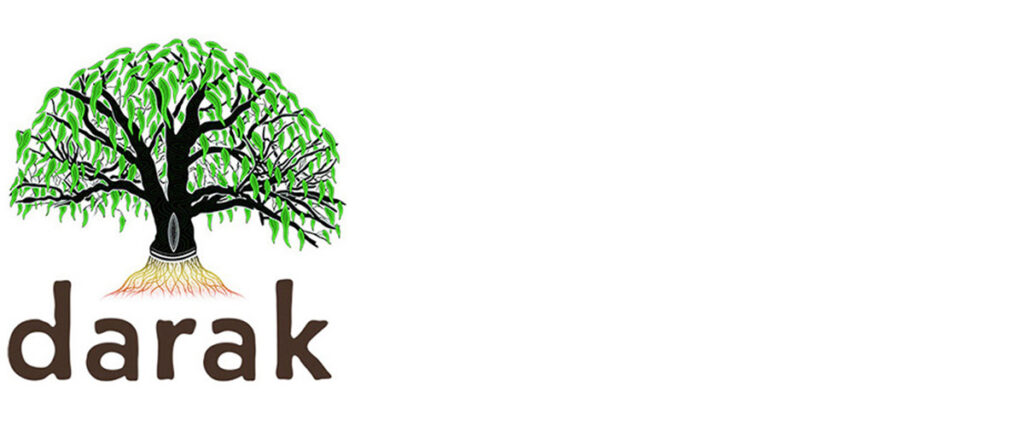Indigenous stroke: walking together
The Australian Stroke Alliance is committed to overcoming significant inequity with its national platform for stroke education and new models of prehospital care developed in partnership with Indigenous communities.

Parents of four kids, Wiradjui woman Charlotte and her husband James have each experienced a stroke. Both are advocates for community education on the signs of stroke and the need for urgent care.
Stroke disproportionately affects Aboriginal and Torres Strait Islander Australians:
- Indigenous Australians have a stroke incidence rate that is two to three-fold that of non-Indigenous Australians
- In those who are under-55 years of age, the stroke incidence rate is six to nine-fold
- Indigenous Australians have higher rates of cardiovascular risk factors, are 10–30 years younger at stroke onset, and less likely to receive secondary prevention or access rehabilitation services
- Their mortality rate from stroke is three to five-fold that of non-Indigenous Australians.
Driven by the Uluru Statement from the Heart, we will work in partnership with Aboriginal and Torres Strait Islander communities, and the National Aboriginal Community Controlled Health Organisation (NACCHO).
Led by Aboriginal medical practitioners, our Aboriginal and Torres Strait Islander Leadership Council will direct our many activities designed to address the disproportionate impact of stroke in Indigenous Australian communities – urban, rural and remote.
Meet the Team
The members of the Council are:
- Co-chair, Dr Angela Dos Santos, Australia’s first Aboriginal neurologist and a Kweiamble and Gumbaynggirr Woman. She is based at the Alfred and Royal Melbourne hospitals and travels on Australia’s first mobile stroke ambulance
- Co-chair, Associate Professor Luke Burchill, Australia’s first Aboriginal cardiologist, and a member of the Yorta Yorta/Dja Wurrung nations. Luke is based at the Mayo Clinic specialising in adult congenital heart disease
- Professor Aunty Kerrie Doyle, Associate Dean Professor Indigenous Health School of Medicine, Western Sydney University
- Charlotte Dodds-Porter, consumer and researcher
- Katherine Edwards, Director Aboriginal Health at Country Health SA Local Health Network Incorporated
- Kim Morey, Co-Theme Leader, Aboriginal Health Equity Theme, Wardliparingga, SAHMRI
- Michelle Crilly, paramedic and Aboriginal and Torres Strait Islander Program Lead at Ambulance Victoria.
To understand the impact of stroke on Aboriginal and Torres Strait Islander people you need to look beyond the mortality and morbidity statistics. You need to understand the cultural impact. With stroke occurring a decade earlier in Aboriginal people, we are losing our next generation of Elders. This Alliance is about more than improving stroke outcomes – it’s also about keeping our communities strong and our culture alive.
The plan
According to Australia’s first Aboriginal neurologist, Dr Angela Dos Santos, this initiative represents a once-in-a-lifetime opportunity to improve stroke care and outcomes for Aboriginal and Torres Strait Islander people.
Working in Partnership
The Alliance will:
- Engage with Aboriginal and Torres Strait Islander communities, value Indigenous knowledge systems, and create space for Indigenous strengths-based solutions to improve stroke care and outcomes
- Create a network to build training and capacity, supporting the next generation of Aboriginal and Torres Strait Islander researchers and community champions for stroke care and research
- Develop culturally safe stroke care pathways for Aboriginal and Torres Strait Islander people that links them back to country and community for optimal care and healing
- Deliver timely access to the right tests, the best expertise and the right treatment for stroke. This will translate to more Indigenous stroke survivors with less disability and who will live longer healthier lives
- Integrate a collaborative digital platform for stroke, supported by an Indigenous governance framework, that supports dialogue and knowledge exchange across communities, both Indigenous and non-Indigenous
- Establish an evidence base to improve stroke outcomes by identifying where care is most needed
- Exchange knowledge between Indigenous and non-Indigenous clinicians, researchers and community members to break down cultural barriers and increase our knowledge of Aboriginal and Torres Strait Islander peoples’ world views and understanding of stroke and stroke care
- Improve risk screening and primary prevention by increasing awareness among Aboriginal and Torres Strait Islander people, communities and health services.
Alliance Activities Ready To Implement
‘OneMOB’ – a culturally safe and secure social media hub for Indigenous stroke researchers
This hub will be built in parallel and synergistically interact with the Stroke Alliance’s social media hub, acting as a directory of Indigenous health research expertise. Our research fellows will access communities via relevant Aboriginal community-controlled health organisations, and this toolkit will provide the means for landowner groups and councils to interact safely and to influence guidelines and protocols.
‘Indigenous Knowledge Bank’ – a digital system for stroke research guidelines and protocols
Our emphasis on data mapping and creation of a collective digital hub will work in synergy with an Indigenous Knowledge Bank. This will use adaptive frameworks to translate grassroots needs and concerns into research priorities.
‘Map & Build Cultural Competence’ for Indigenous Stroke Research
Our Indigenous Leadership Council will lead the first ever national map of research organisations that are able to undertake culturally safe stroke research. The council will also develop educational tools that enhance capacity and capability, including a national online training module for all researchers engaged in Indigenous research, benchmarking national standards and ethical guidelines for Indigenous research.
We are one of the richest countries in the world, with an incredible healthcare system. Yet, young Aboriginal and Torres Strait Islander patients who need to live on Country cannot access stroke care; care which has the capacity to completely resolve stroke symptoms, as if the stroke was imagined.
Meet Luke Burchill, Australia’s first Aboriginal cardiologist and co-chair of our Indigenous Leadership Council.
Sign up for our newsletter to keep in-touch.
Learn more…
Our Story
Crunching the data: how’s it going?
Indigenous stroke: walking together
Enduring partnerships: education
Reaching for the cloud: stroke telehealth
Working with Australian communities
The Plan

Thank you to the Dja Dja Wurrung Traditional Owners Corporation who have allowed us to use the word Darak as our name.